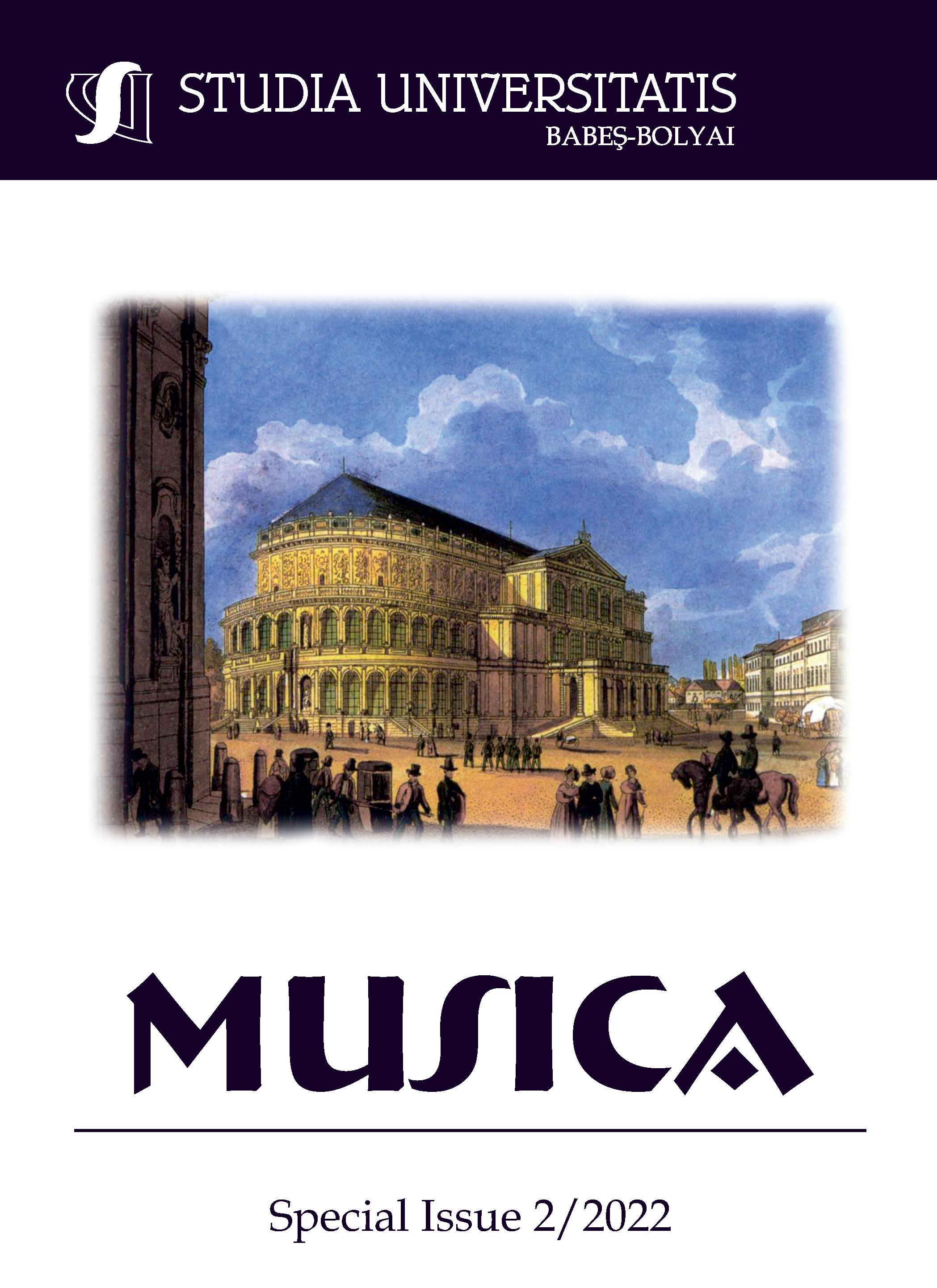MUSICAL SYMBOLS IN THE OPERA "THE THREE SISTERS" BY PÉTER EÖTVÖS
DOI:
https://doi.org/10.24193/subbmusica.2022.spiss2.05Keywords:
Péter Eötvös, opera, Three Sisters, libretto, musical symbolism, triad, third-parallels, instrumental symbolism, prose, sung speech, songAbstract
Opera, as a stage and acting genre, also uses theatrical elements (costumes, dramaturgy, etc.) to convey the work. Opera composers typically use musical symbols as well. I collected these devices of Péter Eötvös’ best-known opera in my study based on literature research. Dramaturgically divided into three sequences, the work always examines its relationship with the other two central figures from the point of view of the central figure of the given part. One of the musical cornerstones of this is changing the internal relationships of triads. The two extreme notes of the triad are always constant (distance of a fifth), but the note located between them characterizes not only the quality of the chord, but also the state of the character connected to it. The unstable balance and reorganization of relationships is well represented by this construction principle. The author also uses the third-parallel, known since Mozart, as a classical musical representation of love. The choices of instrument also have symbolic power. The Prozorov family is represented by the group of woodwind instruments. A kind of irony on the part of the author is the use of cow bells to depict the behavior of the disgusting and unbearable Natasha. Soldiers are naturally represented by brass. Although Solioniy is a soldier, he is not accompanied by brass instruments, but by percussionists, hinting at his personality. The characters speak in different ways of the human voice. From prose to sung speech through to the melodies, there are all kinds of expressions of emotion.References
Chekhov, Anton Pavlovich. Three Sisters (translated by Dezső Kosztolányi). Akkord, Budapest, 1992.
Csehy, Zoltán. Experimentum mundi (Post)modern opera guide, 1945-2014. Kalligram, Budapest. 2015.
Eötvös, Péter, Amaral Pedro. Parlando – Rubato. Rózsavölgyi és Társa, Budapest, 2015.
Grabócz, Márta. Eötvös Péter Operái – Kelet és Nyugat között (The Operas of Péter Eötvös - Between East and West), in Parlando 2013/1. 2013.
Láng, Zsolt. Az új opera felé. Korunk 31/1. 2020.
Tallián, Tibor. …És újrakezdjük az életünket… (… And we start our lives anew…) in Muzsika 43/6. 2000.
Downloads
Published
How to Cite
Issue
Section
License
Copyright (c) 2022 Studia Universitatis Babeș-Bolyai Musica

This work is licensed under a Creative Commons Attribution-NonCommercial-NoDerivatives 4.0 International License.






